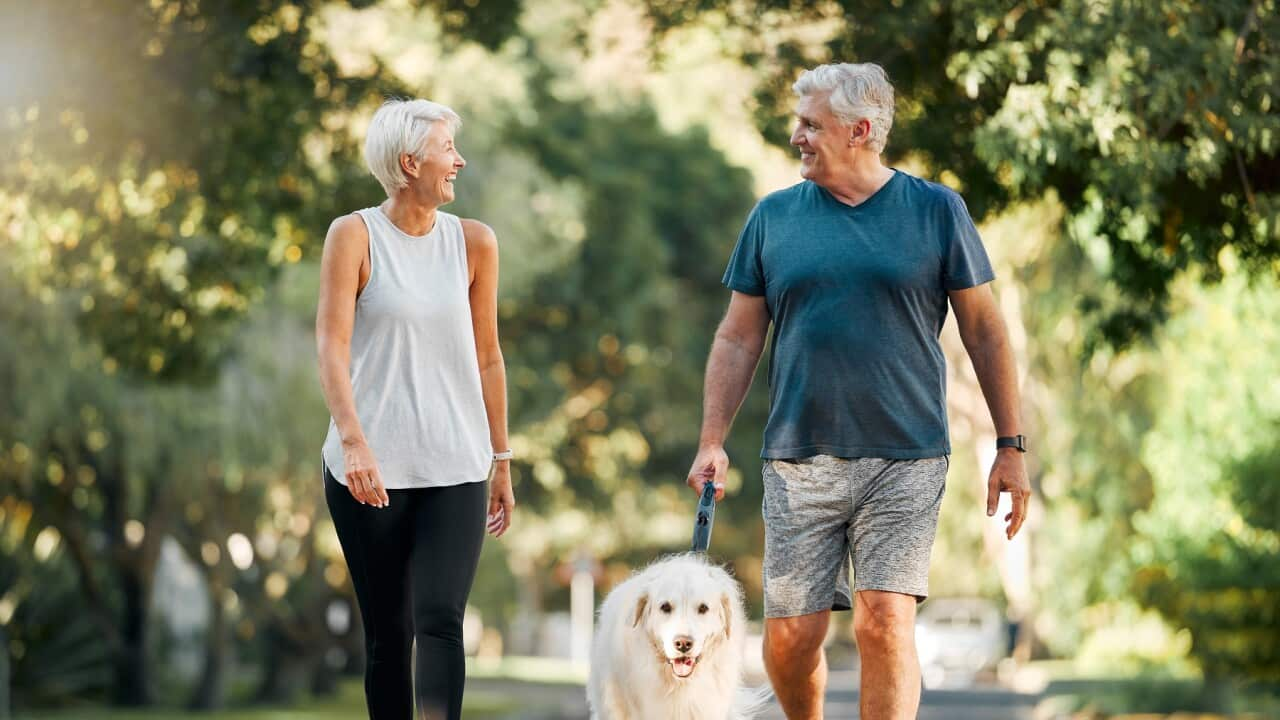TRANSCRIPT:
There's good news for those who enjoy walking.
A new study has found walking at least once a week means you could live longer.
Research led by Monash University and published in the British Medical Journal has found walking as a means of transport at least once a week lowered the risk of all-cause mortality by about 25 per cent for older adults.
Shivangi Shah from the School of Public Health and Preventative Medicine at Monash was the study's lead author.
"Our study on more than 11,000 healthy adults aged 70 years and over highlights that compared to no transport - walking, engaging in any weekly transport - walking was associated with a lower risk of premature mortality, and with about a 25 percent lower risk for those who walked only once a week."
Ms Shah says that their study found even transitioning from no activity to walking once a week made a significant difference.
Professor David Dunstan is the head of the Baker-Deakin Department of Lifestyle and Diabetes, and supports those conclusions.
"I think it underscores that importance of looking at sedentary lifestyles and looking at challenges to get more physical activity throughout the day. This is just one example, walking for transport. Of course, we encounter physical activity in other contexts. This study, and this is a novel aspect of it, was looking at walking for transport only, and that could include simple walking to go to the local grocery store, et cetera. So I think it's really highlighting that the some is better than nothing."
Seventy-five year old Edna also couldn't agree more.
The Heart Foundation has launched their biggest ever physical activity campaign, called 'Walking Wins', to encourage 400,000 Australians to get moving and improve their heart health.
Edna is already part of a Heart Foundation walking group in the ACT called 'Groovy Grannies' - and this was her response when I shared the findings of the study:
"Amazed. Actually, that is a much bigger percentage than I would've said. Just looking at the walkers in our group, as Fran said, they certainly are reaping the benefits of walking twice a week."
But as someone who loves walking, she wasn't entirely surprised.
"I've always been very passionate about any form of exercise, and post retirement I had enough time to actually join Fran and the probably four or five other walkers who were then walking. So off I went."
Fran is Edna's 86 year old friend from the walking group.
She says the physical benefits have been clear among the members.
"There was one lady and she had terrible trouble with her knees and she was walking. We've got two groups, one with a smaller group with older people who walk a bit slower, but they still come. And then the faster group that Edna leads and this lady could, she was really having trouble walking with us in the slow group and now she's progressed to the fast group and she's way up there with them. So she's definitely improved."
For Professor Dunstan, the social benefits of walking also cannot be understated.
"It's pretty well known that there's improved social element to walking, simply getting out of the house, meeting people in the street, meeting friends that are also doing the same thing. I think the social benefits of walking, particularly walking for transport, have really been undersold in terms of the benefits, because we focus a lot on, well, how much is it going to reduce your risk? But really there's an enormous benefit from that social interaction."
That's something that Fran can also vouch for.
"Oh look, it's a wonderful group. I mean, it gets me out of bed and out in the morning three degrees, but it's just lovely once you get out there. And it's not just the walking and the fitness, it's meeting with other people and joining other groups that they're in. You see, oh, well I'm in this book club. Come and join me, or I'm in the craft group, and otherwise they wouldn't have found out about it."
Not every environment is safe for older people to enjoy walking.
Shivangi Shah says it's important to make all environments more accessible.
"This would include well-designed sidewalks, for example, which are smooth without obstacles, safe pedestrian crossings clearly marked. Longer crossing time for this vulnerable population group. Traffic calming measures that would increase pedestrian safety. Good lighting, shaded areas, benches to sit along the route so that they could sit down and rest over there, and close proximity to public transport."
Edna says her group is lucky that the area is well designed for seniors to safely enjoy the activity.
"We are fairly lucky. I think in our area our paths are reasonable and Heart Foundation have just done a - or a survey almost where we've submitted reports on the area, so it's something that is being looked at the whole time."













